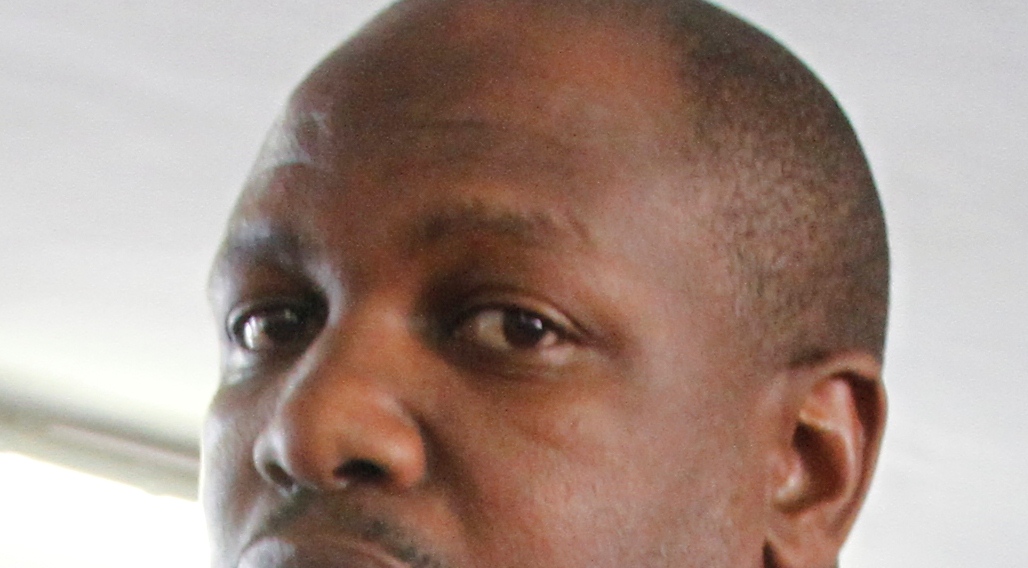
Just after independence in 1980, Zimbabwe boasted of one of the best healthcare systems in Africa, which was underpinned by a strong primary healthcare system coupled with a highly trained workforce.
social commentary
with Moses Mugugunyeki
However, at the turn of the millennium when the economy took a knock, that also saw the collapse of every sector of the country, including the health delivery system.
Public hospitals ran short of drugs while thousands of the health personnel flocked outside the country seeking greener pastures.
According to an analysis: The future of health in Zimbabwe published in the Global Health Action (2018), government’s expenditure on health dropped from 7% in 2000 to 4% in 2007.
The official inflation rate surged to 231 000 000% in June 2008 while more than 80% of the country’s population was living on less than US$1 a day and nearly half was chronically malnourished.
A cholera epidemic that claimed more than 4 000 lives in 2008 nearly put a death knell on the health sector, thanks to external donors and foreign countries which had to chip in.
- Chamisa under fire over US$120K donation
- Mavhunga puts DeMbare into Chibuku quarterfinals
- Pension funds bet on Cabora Bassa oilfields
- Councils defy govt fire tender directive
Keep Reading
Despite pledging in Abuja, Nigeria, to commit 15% of its annual budget to public health spending, Zimbabwe has cut health expenditure over the years, which has left the sector in limbo.
There is no commitment to scale up local efforts to fight HIV and Aids, tuberculosis and other related infectious diseases with the country relying heavily on outside support. According to the national budget, donors are projected to provide about US$496 million towards health this year, far more than the Z$54,705 billion the government allocated.
The advent of the Covid-19 pandemic last year coupled with the hyperinflationary climate have worsened the already precarious health situation.
Health services were overstretched with the government making last-minute readjustments to the health care system.
A number of isolation centres to manage and treat Covid-19 around the country were mooted while Parirenyatwa Hospital was refurbished with 300 beds and piped oxygen, but the health centre had to turn away many patients during the first wave of Covid-19 because of a strike by health personnel.
Across the country, isolation centres that the government had planned to establish died a natural death due to lack of funding.
In Chitungwiza, a Covid-19 isolation centre that the government planned to establish is lying idle after work to refurbish a council clinic was stalled due to lack of funds.
This means that despite its bloated population, the town refers Covid-19 patients to Harare, 30km away, while for the majority, the burden had to be taken up by the family.
In most cases women would be the main caregivers.
“When my husband fell ill, we took him to the clinic before we were referred to Chitungwiza Central Hospital. Despite his condition, we were not helped, but we were told to go to Harare at either Wilkins or Parirenyatwa hospitals,” said Tendai Zenda, a resident of Zengeza 3.
“We had to go to a private doctor who advised us to do Covid-19 tests and isolate my husband from the rest of the family members. We went back home and the test results came out showing that he was positive.
“We were advised that Wilkins and Parirenyatwa were not taking in patients, so we had to take care of my husband at home. We were told that there was no Covid-19 isolation centre in Chitungwiza, so I had to carry that burden.”
According to a survey of 1 000 men and women aged 14-30 produced by a market research agency for the children’s charity Theirworld, apart from care-giving, women are also spending more time cleaning (69%, compared with 58% of boys and men), shopping (52%, compared with 49%), and looking after siblings (28%, compared with 16%).
“With my husband lying ill, I had to do everything in the home, taking care of the sick and doing other household chores,” she said.
Zenda is among millions of women across the globe whose resilience will be celebrated tomorrow when the world commemorates the International Women’s Day.
This year the global commemorations run under the theme Women in leadership: Achieving an equal future in a Covid-19 world, while the local theme is Women’s rights to decision-making vital in the face against the Covid-19 pandemic.
The themes pay tribute to the tremendous efforts by women and girls around the world in shaping a more equal future and recovery from the Covid-19 pandemic.
“Women’s care-giving can be part of our culture, but when it comes to the pressure of Covid-19 and other diseases, the impact on women shows how devastating the unequal burden of care-giving can be,” said social commentator Dorothy Chirwa Tumbo.
“Taking care of the sick affects women and girls socially, economically, physically and mentally. Without Covid-19 management training, the pressure of caring for someone who is infected increases vulnerability to anxiety, depression and other psychological disturbances.”
In an article titled: Covid-19 control pitfalls and challenges and drivers of SARS-CoV-2 transmission in Zimbabwe published in The Pan African Medical Journal [Volume 38] January to April 2021, local medical expert Grant Murewanhema said home-based care was likely to trigger a lot of problems.
“People have been forced to look after their sick relatives at home without adequate infection prevention control measures, which could potentially result in widespread community transmissions. Without adequately dealing with healthcare issues, Covid-19 control is likely to remain a challenge,” Murewanhema said.
Women’s Coalition of Zimbabwe in a statement said the high number of active Covid-19 cases being managed at home as compared to the hospitalised cases is worrisome.
“We, therefore, highlight our concerns on home-based care and lack of the support systems to assist such households. Reports from our networks indicate the non-operation of isolation centres in areas such as Kwekwe,” the statement read.
“Given these challenges, we reiterate the need for the Ministry of Health and Child Care to officially communicate and publicise information regarding the state of isolation centres and hospitals throughout all provinces and districts of Zimbabwe.
“We urge government to introduce and implement measures to support home-based carers and primary care-givers in order to ease their burden and to minimise further risk of transmission.”
Women’s Coalition of Zimbabwe called for the up-scaling of efforts on safe isolation centres, which are not overcrowded and cater for the needs and rights of women such as the availability of sanitary facilities and sexual and reproductive health services.
Itai Rusike, Community Working Group on Health executive director, said the health sector in Zimbabwe was not fully prepared and capacitated enough to deal with the Covid-19 pandemic.
He said the pandemic highlighted a deeper problem in the financing of the country’s health system.
“So, much was expected of the 2021 national budget given the current Covid-19 pandemic. The health services have been facing so many disruptions, some Covid-19-related and some as a result of our own policy inconsistencies, inefficiencies and corruption,” Rusike said.
“Due to the budgetary challenges, it became unsustainable for the government to continue operating the isolation centres, hence other cost-effective public health prevention measures such as self-isolation at home, closure of borders and a countrywide lockdown had to be instituted.
“Many Covid-19 patients were at some point turned away from isolation centres mainly because our hospitals were overwhelmed by Covid-19 cases with limited staff and bed capacity. As a result, some patients were forced to seek care from the highly expensive private hospitals and those that could not afford private hospital care services sadly had to go back and die at home.”
Speaking during a virtual Health Summit on local tele radio Heart and Soul on Wednesday, chief coordinator, National Response to the Covid-19 Pandemic Agnes Mahomva said Zimbabwe was ready to tackle Covid-19 as evidenced by the successful management of the first wave.
“Many people can I ask if we were ready. Yes, we were ready. There were lots of challenges with infrastructure, lots of challenges with the economy. So, it was slow, but we were ready for the pandemic,” Mahomva said.
“From the onset we started building capacities making sure all our 52 districts are capacitated with laboratories and Covid-19 treatment centres. We also made sure we involve the private sector.”
Self Help Development Foundation [SHDF] director Wadzanayi Vere said apart from the burden of care-giving, women would be disproportionately affected by Covid-19-induced poverty.
“The burden of home-based or woman-based care during the pandemic has limited women’s capacity in developmental processes,” Vere said.
“Women’s livelihoods are destroyed and outlawed so that they can go and provide women-care [home-based care]. Are we not overburdening women and girls?”
Vere said SHDF and other development partners were leading innovative ways to build women’s economic capacities despite challenges.
Data summarised in the report, From Insights to Action: Gender Equality in the wake of Covid-19, shows that the pandemic will push 96 million people globally into extreme poverty by 2021 — 47 million of whom are women and girls. This will increase the total number of them living in extreme poverty to 435 million, with projections indicating that this number will not revert to pre-pandemic levels until 2030.
For Zenda, a cross-border trader, besides carrying the yoke of taking care of her husband, she lost her source of income after the border was closed as part of containing the spread of Covid-19.











